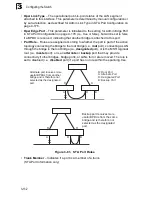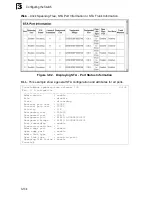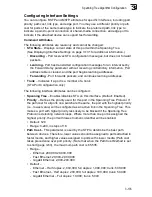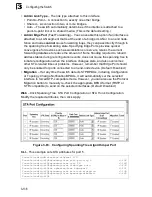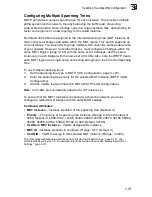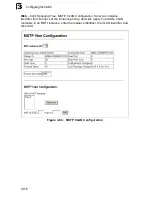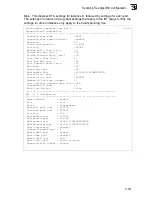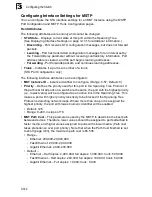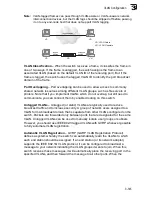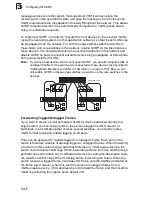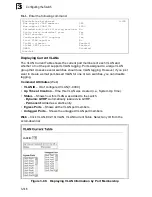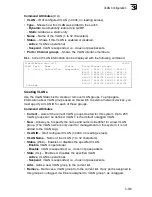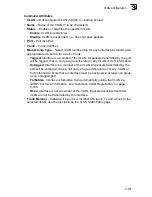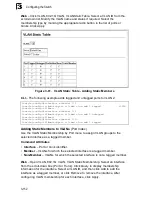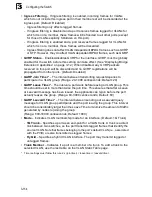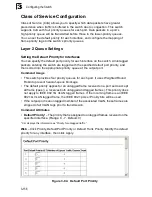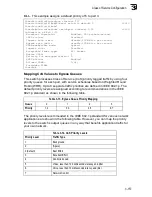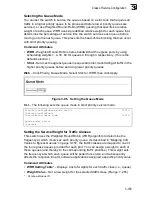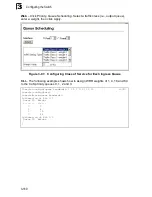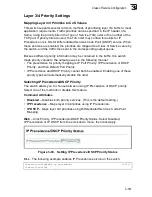
Configuring the Switch
3-146
3
message arrives at another switch that supports GVRP, it will also place the
receiving port in the specified VLANs, and pass the message on to all other ports.
VLAN requirements are propagated in this way throughout the network. This allows
GVRP-compliant devices to be automatically configured for VLAN groups based
solely on endstation requests.
To implement GVRP in a network, first add the host devices to the required VLANs
(using the operating system or other application software), so that these VLANs can
be propagated onto the network. For both the edge switches attached directly to
these hosts, and core switches in the network, enable GVRP on the links between
these devices. You should also determine security boundaries in the network and
disable GVRP on ports to prevent advertisements being propagated, or forbid ports
from joining restricted VLANs.
Note:
If you have host devices that do not support GVRP, you should configure static or
untagged VLANs for the switch ports connected to these devices (as described in
“Adding Static Members to VLANs (VLAN Index)” on page 3-150). But you can
still enable GVRP on these edge switches, as well as on the core switches in the
network.
Forwarding Tagged/Untagged Frames
If you want to create a small port-based VLAN for devices attached directly to a
single switch, you can assign ports to the same untagged VLAN. However, to
participate in a VLAN group that crosses several switches, you should create a
VLAN for that group and enable tagging on all ports.
Ports can be assigned to multiple tagged or untagged VLANs. Each port on the
switch is therefore capable of passing tagged or untagged frames. When forwarding
a frame from this switch along a path that contains any VLAN-aware devices, the
switch should include VLAN tags. When forwarding a frame from this switch along a
path that does not contain any VLAN-aware devices (including the destination host),
the switch must first strip off the VLAN tag before forwarding the frame. When the
switch receives a tagged frame, it will pass this frame onto the VLAN(s) indicated by
the frame tag. However, when this switch receives an untagged frame from a
VLAN-unaware device, it first decides where to forward the frame, and then inserts a
VLAN tag reflecting the ingress port’s default VID.
Port-based VLAN
1
2
9
3
4
10 11
12
13
14
5
6
7
8
15 16
18
19
Summary of Contents for Matrix-V V2H124-24P
Page 2: ......
Page 8: ...Notice vi...
Page 22: ...Contents xx...
Page 26: ...Tables xxiv...
Page 30: ...Figures xxviii...
Page 38: ...Introduction 1 8 1...
Page 50: ...Initial Configuration 2 12 2...
Page 159: ...Port Configuration 3 109 3 Figure 3 66 Displaying Etherlike and RMON Statistics...
Page 234: ...Configuring the Switch 3 184 3...
Page 480: ...Command Line Interface 4 246 4...
Page 496: ...Index Index 4...
Page 497: ......
Page 498: ...Part 150200039400A FW 2 5 2 0 E012005 R02 ES3526G E072000 R04...

